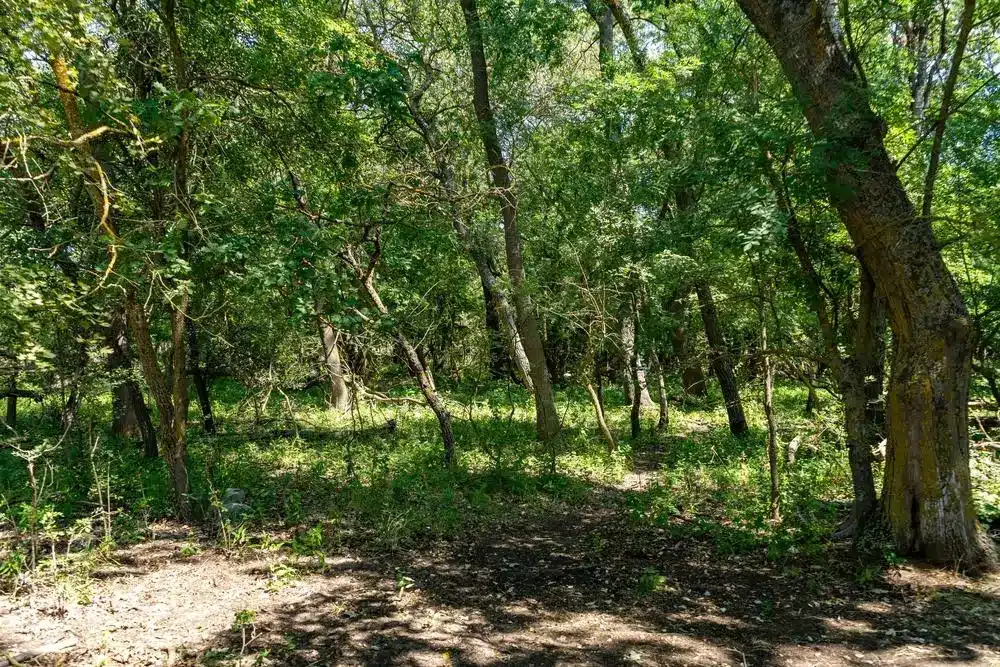Cuprins
- 0.1 Natural Reserve Included in UNESCO World Heritage
- 0.2 Flora and Fauna of Caraorman Forest
- 0.3 Caraorman Forest and the Legend of the Kneeling Oak
- 0.4 The Most Spectacular Sand Dunes in the Danube Delta
- 1 How to Get to Caraorman Forest
- 2 What Interesting Activities You Can Do in Caraorman Forest
- 3 Accommodation Options in the Heart of the Danube Delta
The Danube Delta is a natural paradise that we can enjoy responsibly.
Beyond the well-known or frequented tourist spots, the Delta hides wild treasures of rare beauty.
One such authentic place, right in the heart of the Danube Delta, is Caraorman Forest. So, if you want to explore subtropical natural landscapes, plan a day of exploration in Caraorman Forest. Here’s everything you need to know.
- Caraorman Forest – features and curiosities
- How to get to Caraorman Forest
- What interesting activities you can do in Caraorman Forest
- Accommodation options in the heart of the Danube Delta
Caraorman Forest – Features and Curiosities
Caraorman Forest is a strictly protected natural reserve located on the sandy bank – the Caraorman Grind, in the southern area of the Sulina branch.
The name “Caraorman” comes from the Turkish word meaning “Dark Forest” or “Black Forest,” derived from the deep shade cast by the imposing, dense oaks here. However, you won’t find an entire forest as you might imagine, but rather several clusters of trees separated by sandy roads and paths.
The forest and the village of the same name are located on the Caraorman Grind. Alongside another well-known grind in the Delta, Letea, the Caraorman Grind once formed the sandy barrier that blocked the Tulcea Bay.
Moreover, Caraorman and Letea forests are natural areas with many geomorphological similarities. Over 2,000 years ago, this area was covered by the sea, and as the water began to recede, the Letea-Caraorman sand islands were formed.
Adding to the features and curiosities of Caraorman Forest, discover 👉 Danube Delta information. A complete, easy-to-follow guide with useful information and plenty of photos to inspire your search for the natural beauties here.
Natural Reserve Included in UNESCO World Heritage
Caraorman Forest was declared a nature monument in 1940, a national interest area in 2000, and as part of the Danube Delta Biosphere, it is included in the UNESCO World Heritage.
As a visitor to this place, according to the Danube Delta Biosphere Reserve Administration, in Caraorman Forest, it is forbidden to:
- Pick wild plants;
- Capture wild animals from their habitat;
- Cut or break trees, saplings, or shoots;
- Camp or make fires;
- Disturb the peace of nature;
- Leave waste behind;
- Engage in sporting or cultural-educational activities
Flora and Fauna of Caraorman Forest
The forest, which spans 2,250 hectares, is characterized by many spectacular oaks, along with ashes, poplars, and Mediterranean plant species like lianas and climbing plants. In Caraorman Forest, you can find lianas that reach over 20 meters in length. The species “Periploca graeca” is unique in Europe. Moreover, in spring, you can see wild orchids.
In other words, Caraorman Forest is a unique natural spectacle with subtropical fauna and landscapes. Keeping things in perspective, you’ll find here a mini jungle of Romania.
Regarding fauna, there is a natural habitat favorable for the white-tailed eagle, one of the largest birds of prey in the Danube Delta, protected by law. You can also admire the common raven, the black woodpecker, the otter, the jackal, and the wild hare. As in Letea, you may also see horses roaming freely in the wild.
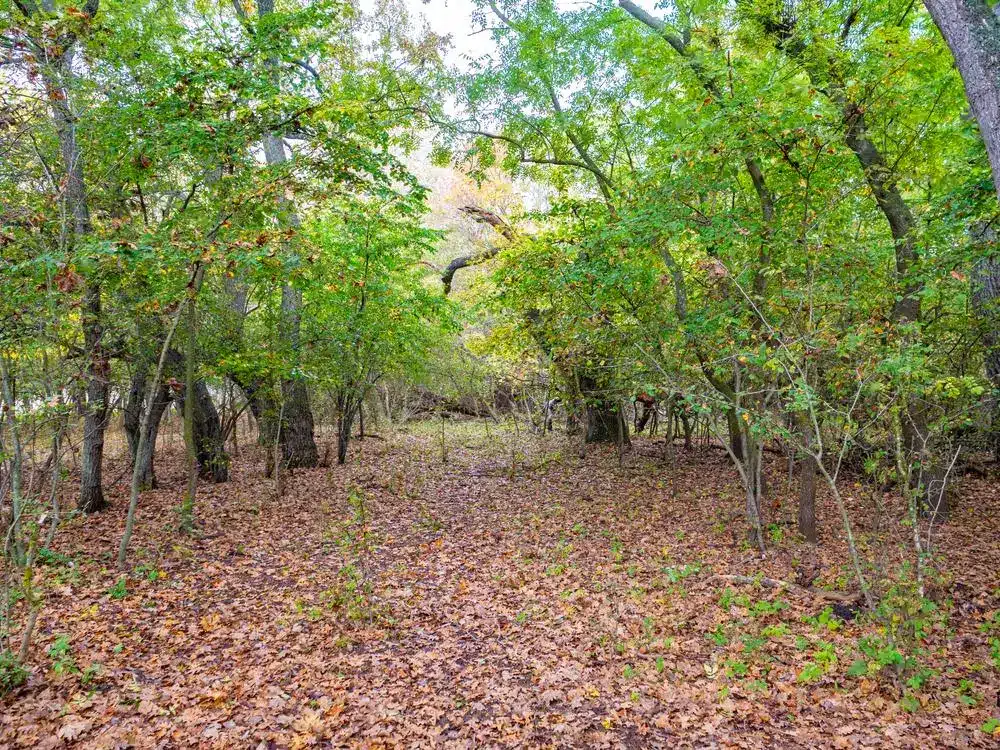
Caraorman Forest landscape
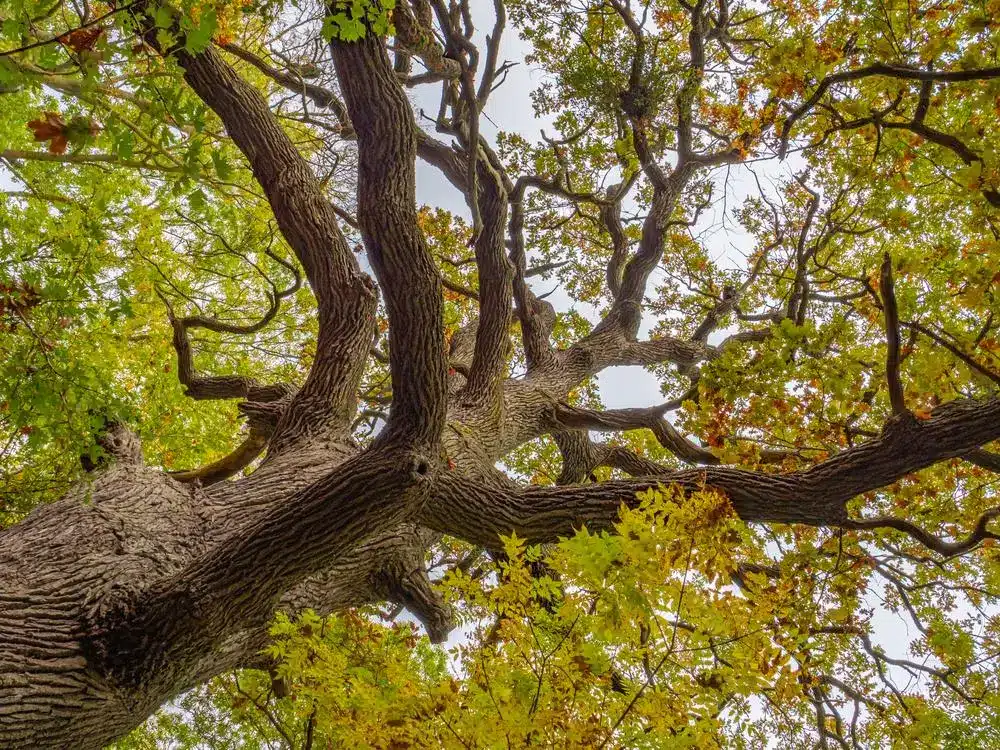
Caraorman Forest Oak
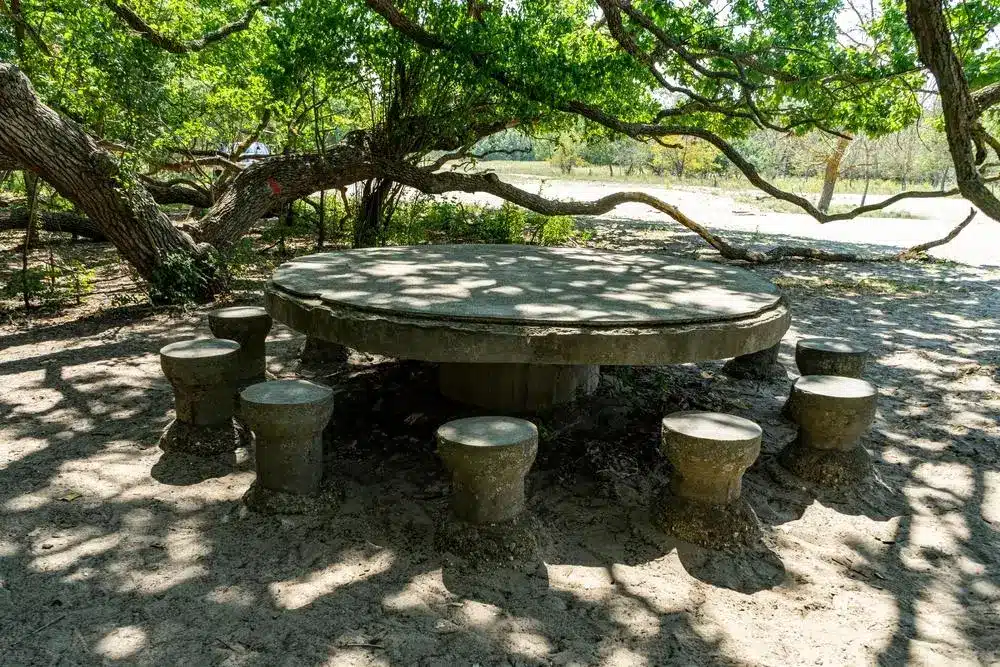
Table of Silence in Caraorman Forest
Caraorman Forest and the Legend of the Kneeling Oak
The main attraction of Caraorman Forest is the Kneeling Oak, considered the largest oak in the Danube Delta. It is over 400 years old and has a circumference of 4 meters. The name comes from its branches, which have reached down to the ground.
The Legend of the Kneeling Oak reveals the love story between the beautiful daughter of a man from Crișan and a Cossack warrior known for his bravery.
Their love, as they were preparing for their wedding, was threatened by a Turk who asked for the girl’s hand, but she refused.
Eventually, the Turk and his helpers kidnapped the girl and hid her in the Black Forest. The Cossack warrior managed to track down the Turk and fought a life-and-death battle to save his future bride. The Turk and his helpers were killed, begging for mercy.
Shortly after their wedding, an oak sapling sprouted on the site of the bloody battles, growing in an unusual way.
Near the Kneeling Oak is another important landmark, the Hunters’ Well, which is a replica of Constantin Brâncuși’s famous sculpture, “The Table of Silence.” Here, you’ll also find a well with drinking water.
The Most Spectacular Sand Dunes in the Danube Delta
Near the village of Caraorman, you can find the most spectacular sand dunes in the Delta, unique in Romania. They stand out particularly for their great heights, reaching 7 or even 9 meters. These are mainly dunes without vegetation, shaped by the winds that blow through the area.
With all the features and curiosities mentioned above, Caraorman Forest is a unique place in the Danube Delta. Next, learn how to get here and what interesting activities you can enjoy.
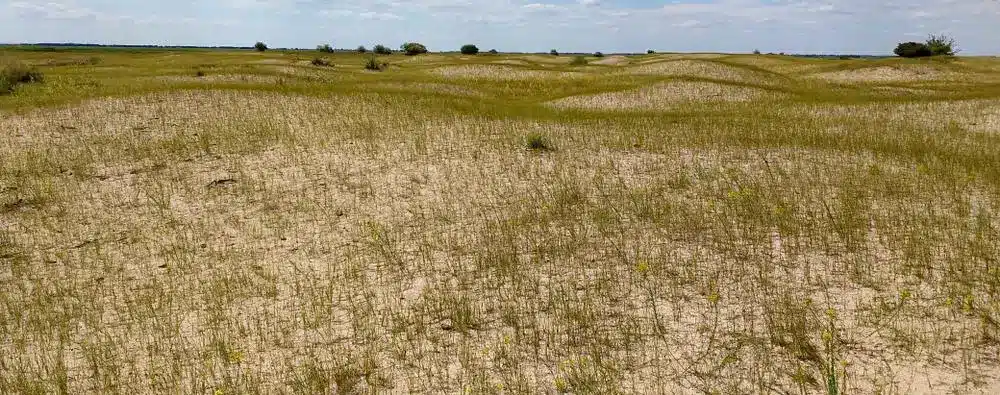
Sand dunes in Caraorman zone
How to Get to Caraorman Forest
Unlike other places in the Delta, the village of Caraorman is accessible only by boat, along the Caraorman Canal. From there, you can head to Caraorman Forest, visible from the village’s edge.
Caraorman Forest can be reached from the village of Caraorman, which belongs to the Crișan commune, Tulcea County. From Tulcea to the village of Caraorman, it’s about 60 km by water. It takes about an hour from Sulina, and the shortest journey is from Crișan, about 30 minutes.
👉 Boat tours to Caraorman Forest are organized from almost all major areas of the Delta.
Therefore, nothing stops you from admiring the wild landscapes of these amazing natural territories from the boat deck, where all urban noises fade into the gentle sound of the water
What Interesting Activities You Can Do in Caraorman Forest
Caraorman Forest offers less touristy spots in the heart of the Danube Delta, with unique wild natural landscapes. In addition to an exploration trail through the forest, don’t miss the culinary experience in the village of Caraorman.
Exploration Trail of Caraorman Forest
It’s important to take the exploration trail with a guide who knows all the parts of the forest, as well as the stories and details related to this wild destination. The paths of Caraorman Forest, some in the form of true labyrinths, lead you to natural landscapes unique in our country.
Safari-style exploration trails are available, with off-road vehicles or in a more traditional style, with a cart pulled by a tractor. It’s the only place in Romania where you can have a safari-style experience.
You can also reach Caraorman Forest on foot, but it’s not recommended, especially for first-time visitors. For example, in spring, the terrain can be flooded, and in summer, the temperatures are too high.
Regardless of your choice, the experience is very interesting, with landscapes that change from moment to moment. The sand dunes and subtropical forest with lianas create truly fascinating landscapes.
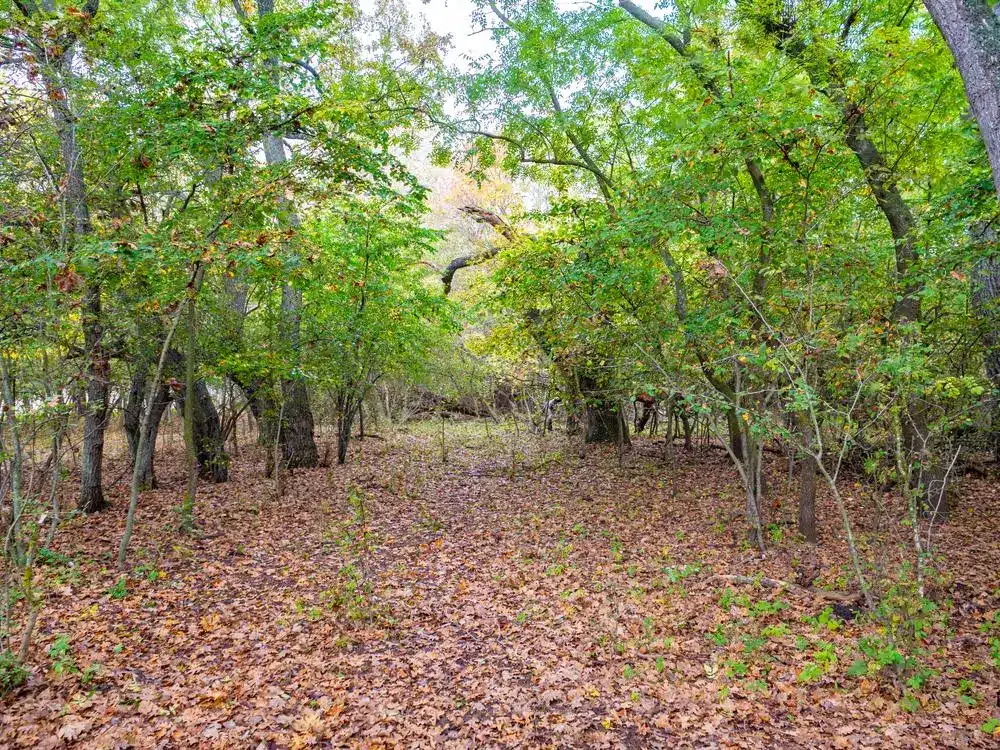
Hike through the Caraorman Forest
Birdwatching
Once in Caraorman Forest, you’ll notice the silence that reigns here. Occasionally, the chirping of birds and the rustling of leaves remind you of the connection with the wild nature here.
In the peace of Caraorman Forest, you can engage in birdwatching activities. Therefore, for ornithologists and birdwatching enthusiasts, the forest is a natural paradise not to be missed.
Experience the Village of Caraorman
Located in the heart of the Danube Delta, the village of Caraorman is one of the few traditional villages that has retained its old charm. It’s a simple community, with beautifully preserved houses, which you can discover by quietly walking the fine sandy streets.
In the port area, you can still find the ruins of the industrial landscape from communist times. In Caraorman, there was a plan to establish a center for the exploitation of marine-origin quartz sand, along with a glass factory. Ultimately, it remained an unfinished and abandoned project.
The locals are very hospitable, so don’t miss the fishermen’s cuisine typical of the Lipovan Russians and Haholi – a small Ukrainian-origin population that still has roots in these picturesque places of the Delta.
We recommend trying the “storceag” and the tasty dishes made from carp and crucian carp. And the doughnuts are absolutely delicious. So, on your way back from Caraorman Forest, stop for a culinary treat that you can only find in the heart of the Delta!
Accommodation Options in the Heart of the Danube Delta
In the heart of the Danube Delta, you can find various accommodation options, depending on your preferences and budget.
For example, you can consider Crișan, the closest commune to the village of Caraorman, or Sulina, the most important town in the Danube Delta.
If you want accommodation in the middle of nature, 👉 Dolphin Camping is the perfect place for you.
Located in Sfântu Gheorghe, just a few steps from the beach, sea, and Danube, you have cabins and camping spots where peace and fresh air are included in the price.
Plus, we’ve prepared tips to help you find cheap and good accommodation at Dolphin Camping!
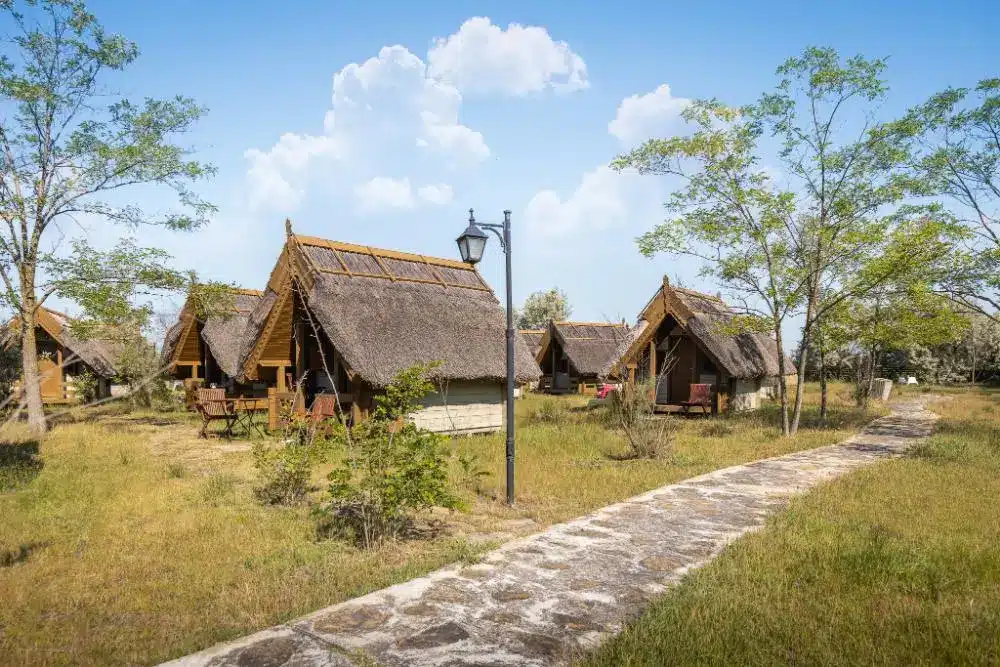
Accommodation in cottages - Dolphin Camping
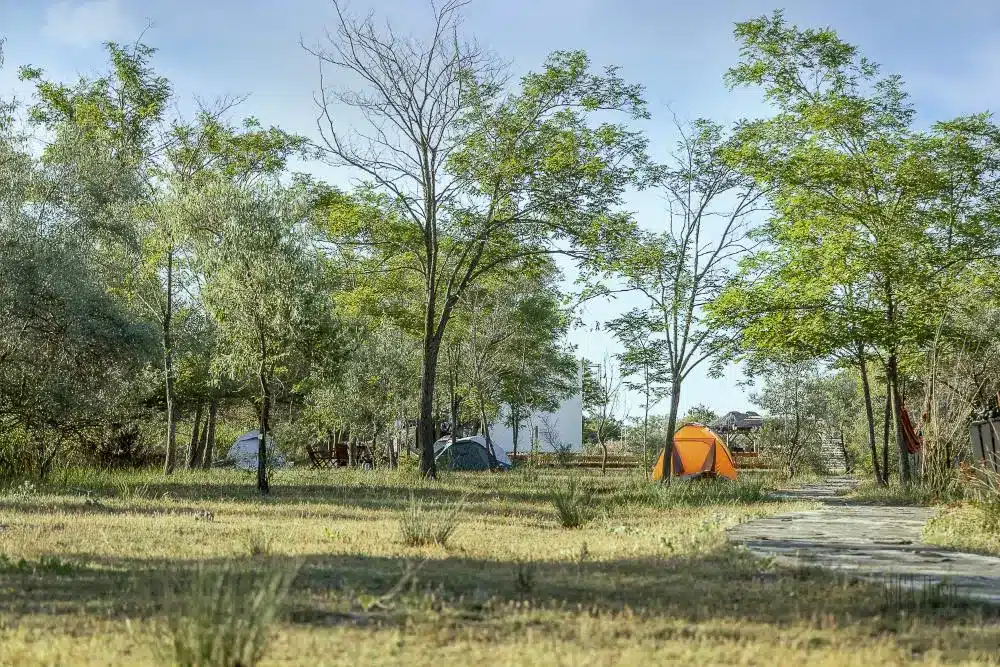
Tent area - Dolphin Camping

Cayak session
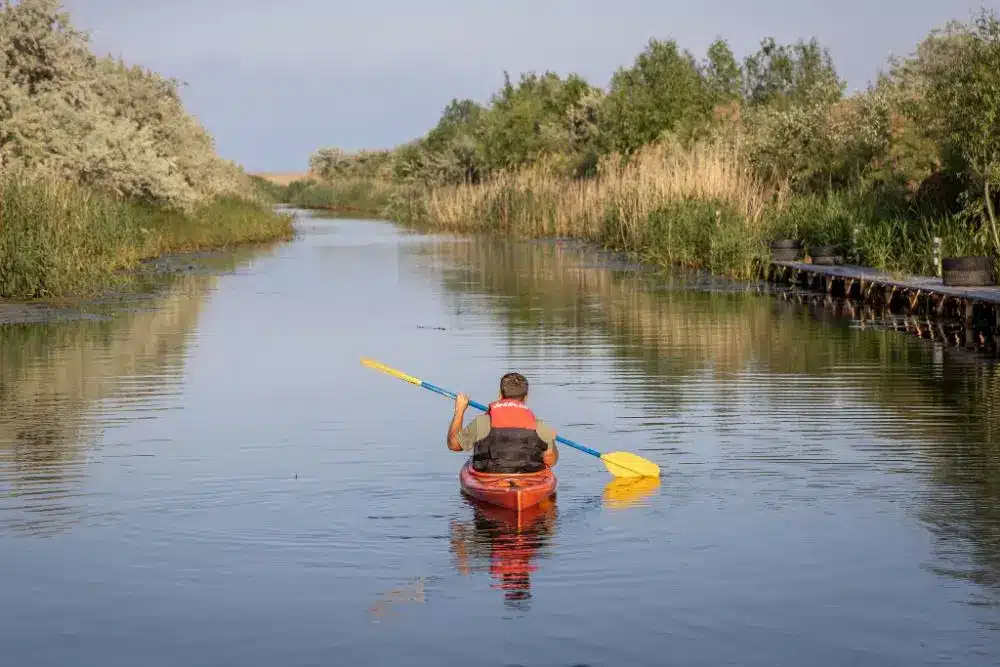
Plimbare cu caiacul
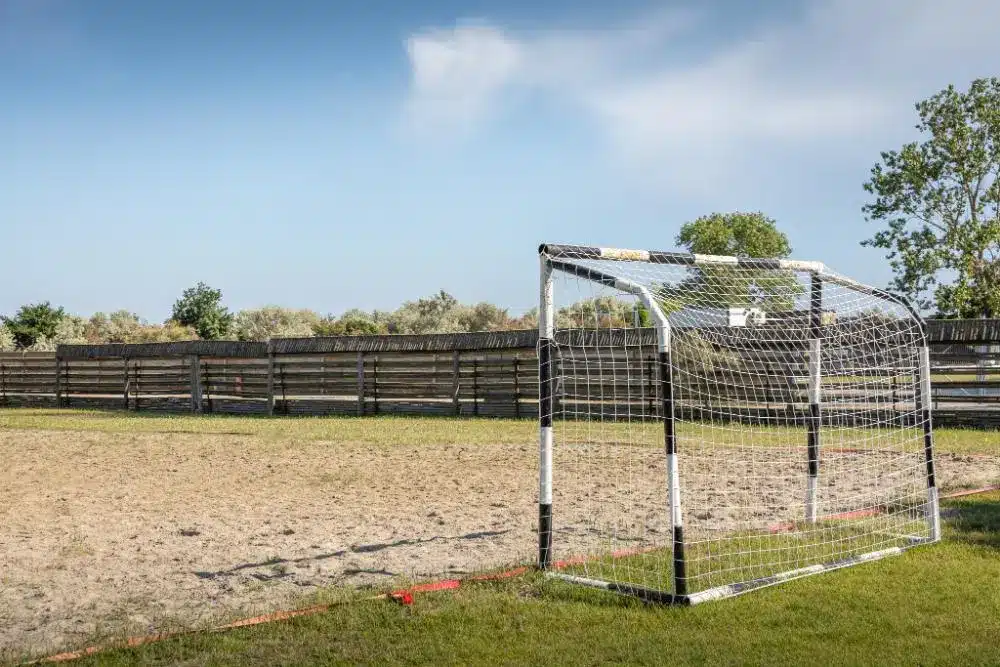
Sports court - Dolphin Camping
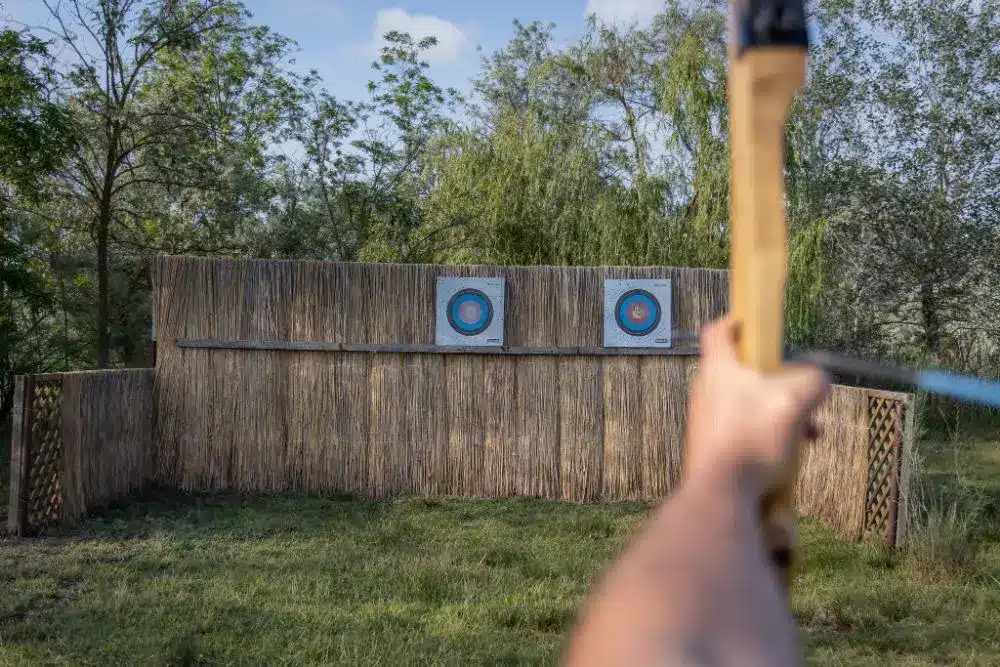
Archery - Dolphin Camping
All in all, the Caraorman Forest is one of the most sought-after wildlife destinations in the Danube Delta, a place where subtropical and desert vegetation offer an unforgettable natural spectacle.
Photo source: Shutterstock, Shutterstock, Shutterstock, Shutterstock, Shutterstock, Shutterstock, Dolphin Camping

